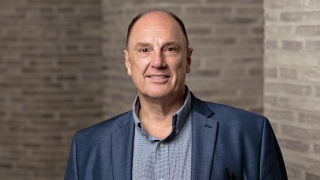2020–21 Annual Report: Table of Contents and Director's Foreword
1. Director's Foreword
Highlights of the Year
2. Campus and Community Programs
Campus Engagement: Curricular and Co-curricular
Curricular Engagement
Co-curricular Engagement
Intern Engagement
Public Programs: Highlights
Public, Campus, and Community Programs
Programs for Schools
3. Exhibitions
Exhibitions on View 2020–21
A Space for Dialogue
4. Collections
Acquisitions
Outgoing Loans
Loans Returned
Deaccessioned Objects
Objects Conserved
5. External Relations / Operations
Publications
Social Media
Public Relations
Visitor Services
Building/Security
6. Digital Platforms, Media, and Archives
Audience-Facing Digital Platforms
Internal Digital Platforms, Media, Archives
Digitization of Collection
7. Development
Donors of Works of Art
Director's Circle Members
8. Our Team
Staff, Board, and Volunteers
Interns
Museum Club
9. By the Numbers
Attendance
Museum Gallery Attendance
Dartmouth Student Attendance
Children and Youth Attendance
Adult Attendance
Program Attendance
Online Engagement
Museum Website Visits
Facebook
Instagram
Twitter
LinkedIn
The Collection
Works in the Collection
Works Receiving Conservation
Loans to Other Institutions
New Acquisitions
Objects Digitized
Academic Use of the Galleries and Bernstein Center for Object Study
Number of Class Visits
Number of Faculty Visits
Number of Student Visits
Works Pulled from Storage for Teaching
Programs and Events
Programs
Lectures, Symposia, Gallery Talks, and Special Events
Family Programs
K–12 Students Served in Images, Art Start, and Tours
Co-curricular Dartmouth Student Programs
Attendance at Co-curricular Dartmouth Student Programs
Staff
Full time
Interns
Docents
Museum Statistics
Galleries
Gallery Square Footage
Bernstein Center for Object Study Square Footage

LEFT Director John Stomberg takes Dartmouth students on a Tiny Tour through the museum. Photo by Isadora Italia.

ABOVE Photo by Rob Strong.
Director's Foreword: The Year That Was
So much of the writing about life during the COVID-19 pandemic focuses on all that we missed. This was, of course, true for the Hood Museum of Art as well. Looking through the pages of this annual report, though, it becomes clear that the museum's staff managed to adapt and excel despite the myriad challenges. The report reflects both their dedication and the continuing importance of the work they do.
For the first few months of the pandemic, we shared our work primarily through virtual programs. While the means had changed, the message remained the same, and the power of art and sharing was clear in the enthusiastic responses to our online lectures, conversations, and artmaking activities. As we learned to embrace the difference between speaking face-to-face and using digital platforms, the tenor of our presentations became more conversational, and the pace slowed down to accommodate the altered manner in which we all process information over the Internet.
These virtual approaches had a major advantage—a true silver lining: by presenting all of our work online, we began to reach a broader audience, especially in terms of geography. Participants were logging on from Asia, Australia, and Europe, as well as throughout North America. Alumni and family members of the artists and speakers joined us in a manner that had been impossible when events required participants to attend in person in Hanover, New Hampshire.
The content of our programs—art and the people who make it—continued to resonate with our audiences and often felt more urgent than in the past. The need for human connection was palpable. Art become an inroad to sharing discoveries and concerns as they emerged during the various levels of "lockdown" we all endured. We sensed, and embraced, increased interest in the artists themselves.
By fall 2020, we had opened the Hood Museum in a very limited capacity; small groups of students could enjoy a guided visit with a member of the staff—a Tiny Tour—or could sign up to explore the museum individually—our Tiny Visits. The visitor numbers were never huge, but this engagement was significant for the students and for the Hood Museum staff. We maintained a schedule of changing exhibitions and focused on student-curated projects. These programs lasted for the remainder of the academic year, increasing in scale slowly as time went by and we began to welcome Dartmouth faculty and staff into our galleries as well.
In all, the 2020–21 academic year proved the important role that an art museum can play in providing connection and care within a community. During a deeply worrisome time, the Hood Museum of Art offered meaningful activities for those who wanted to engage with them. Many of the lessons we learned will stay with us. This year, so problematic and challenging on so many levels, also provided the museum's staff with the time and desire to examine our practice carefully and to institute changes in what we show, how we engage with it, and to whom we address our work. Those initiatives will inform the content of the next annual report; meanwhile, what a year it was.
John R. Stomberg
The Virginia Rice Kelsey 1961s Director

